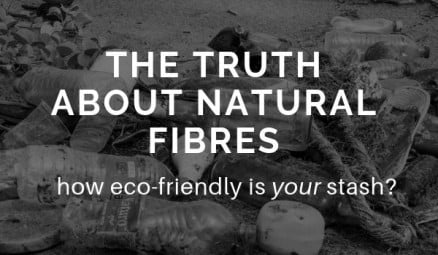With growing concerns about micoplastics polluting our water, more and more yarn crafters are turning to natural fibre yarns to ease their own carbon footprint. But how much good is it actually doing?
Every fibre in the yarns crafters use has a carbon footprint whether its cotton yarn or alpaca fibre. Fact. With growing global concerns over the negative environmental impact of plastics and synthetic fibres (eg. acrylic) here at Laughing Hens we’ve been feeling pretty confident about our dedication to providing yarns made from high quality natural fibres. But heightened awareness and transparency has sparked some heated debate in our office about the true environmental impact of our favourite natural fibres. Are they really as good as we think they are?
In this article, we aim to scrutinize our beloved natural fibres and see how environmentally friendly they are. Our knowledge in some areas, despite our research is limited. However, we know all natural fibres have some environmental impact but by understanding what these are, we can make decisions to minimise them and demand manufacturers do the same.

The most common natural fibre in any natural fibre enthusiast’s yarn stash! Shorn from hundreds of sheep breeds worldwide, this amazing protein fibre (made up of keratin, the same as human hair) comes in an astounding variety of textures and natural colours. The benefits of wool are a knock-out: it’s a renewable resource that is completely biodegradable both on land and in water. Wool is breathable, moisture wicking and trans-seasonal whilst being bacteria resistant and naturally flame retardant. Wool takes both natural and chemical dyes easily, making it suitable for low-impact dyeing methods with the added bonus of endless colour options! It’s also extraordinarily resilient with great elasticity making it a perfect choice for long lasting knitwear. (Want to learn more about dyeing your own wool? Click here for our tutorial.)
So, what’s not to like about wool then? Despite all of the above, the sustainability of wool as a fibre and in yarn form is rather complicated. The production of wool yarns from sheep to skein is surprisingly energy intensive. The quantity of land needed to raise sheep is substantial. Roughly 6-10 sheep need at least one acre and sheep should be periodically rotated to a new paddock to allow for comfortable grazing. In mainstream farming, flock densities can be higher than this by providing additional animal feed but this can lead to overgrazing, soil erosion and salinity, which can pollute ground water and render the land unproductive.
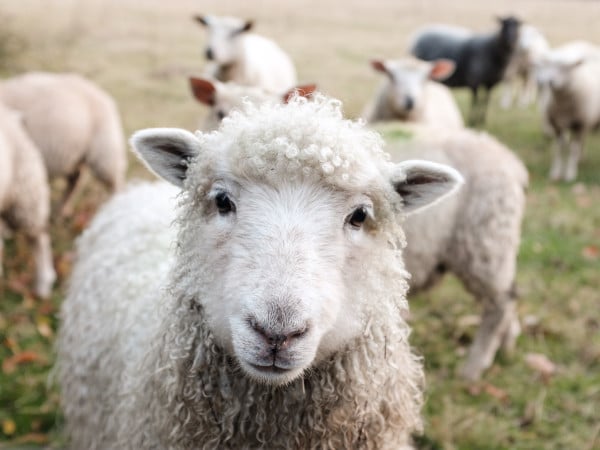
Once the wool has been shorn from the sheep, it needs to be cleaned, picked, carded, spun, dyed, skeined…then packaged and transported! An average scouring plant can use around half a million litres of water per day (it would take you 685 years to drink that much water) and unmodified plants can produce a pollution load equivalent to that of 30,000 people (A1). Non-European Union scouring plants might use APEO’s – a group of detergents that are toxic to the environment. However, APEO’s are banned in the EU and many mills are certified by ‘Oeko-Tex’ which certifies the the human and ecological safety of textile products during all stages of production.
There’s also the added complication of superwash treatment, which many yarn producers prefer as it intensifies the colour of dyes and is an attractive “easy care” marketing tool. This treatment uses chemicals to remove the scales from the fibres making it smooth and soft, after which a biodegradeable resin is permanently bonded to the wool, which uses additional chemicals and water to achieve the superwash wool many of us love.

One of the oldest domesticated animals in the world, alpacas are generally kinder to the environment than sheep. They are less destructive to the land they graze due to their soft toes instead of hooves, require less food and water, and their fleeces do not contain lanolin so are easier to clean without the use of harsh chemicals or detergents. 80% of alpaca fibre comes from free-range animals in small holdings of 50 animals or fewer in Peru that provide essential employment and economic benefits to the local communities. As a natural protein fibre, if left untreated, Alpaca is biodegradable.
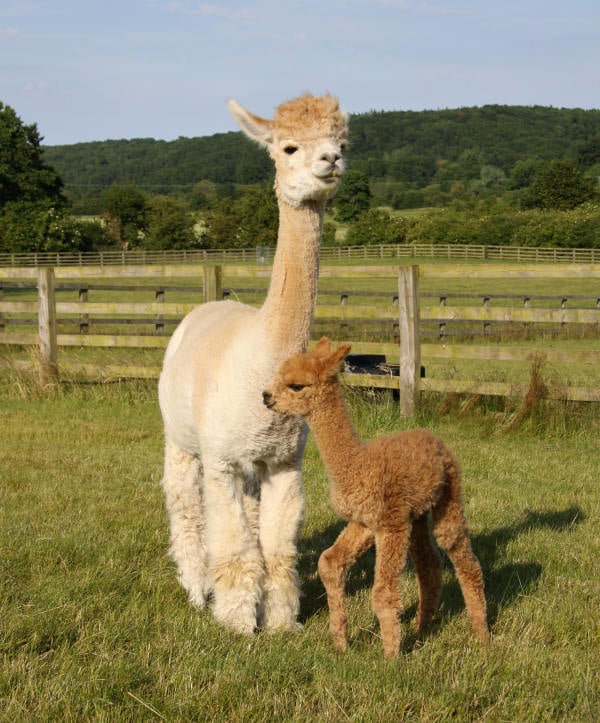
All good. Hurrah! But Higgs have flagged alpaca fibre as the worst polluting materials in their database. This is based on excessive amounts of manure entering water systems (partially due to it being particularly useful as fertiliser) with the potential for devastating eutrophication (over nourished fresh water producing excessive algae life leading to fish population decline), and on the methane and greenhouse gas emissions produced by the grazing animals passing gas.

With roots in China, dating back to as early as the Neolithic period, silk fibres are most commonly created by the chrysalis of silkworms, most often fed on mulberry leaves (Mulberry Silk). As a natural protein fibre, silk is completely biodegradable. It is strong and versatile with an attractive lustre and drape. Silk generally requires less chemicals to process than cotton and some synthetics, takes dye easily and is suitable for low impact dyes. End product care can be easy and minimal as silk yarns and fabrics are most suitable for hand washing at low temperatures without the use of detergents or harsh cleaners.
Silk sounds like it has a lot going for it doesn’t it? Sadly, it is quite resource heavy with most negative aspects coming from the rearing of the raw material. The mulberry crops used to feed the silkworms require considerable pesticides and fertiliser, whilst silk production involves processes such as stoving (boiling) or stifling (dry heating) the silkworms and drains considerable abiotic (rain, soil, pH) resources. As a crop, silk has a low yield and high wastage: only the strongest fibres can be used and ittakes approx. 100 kilograms of mulberry leaves and 3000 silkworms to produce just 1kilogram of raw silk (A2).

It’s natural, it’s plant based, it’s considered vegan, it’s versatile and biodegradable. What’s not to like? Well, actually, quite a bit. Cotton is the world’s highest polluting non-food crop accounting for up to 25% of all global pesticide and insecticide usage (A3).Pesticides are derived from petrochemicals, which are hazardous to the environment, humans and animals. The runoff from these pesticides contaminates lakes, wetlands and ground waters, causing eutrophication (an overgrowth of algae and other microbiotic aquatic life) and effecting biodiversity.
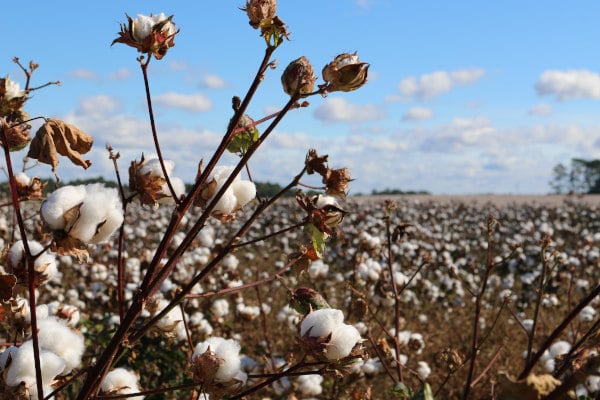
Cotton is a huge resource hog, requiring a staggering amount of water – 20,000 litres to produce 1 kilogram of cotton according to WWF (that’s about 27 years of drinking water for 1 person). In fact, cotton crops are so thirsty that water is often diverted from natural ecosystems to irrigate crops – a leading cause of the shrinking of the Aral Sea dubbed “one of the world’s worst environmental disasters” by World Atlas Cotton has the longest growing season of any annually planted crop in the country, is stubborn and challenging to grow, and requires already fertile land that could otherwise be use for valuable food crops. It’s also surprisingly difficult to dye, resulting in inexhaustible chemicals that are hazardous to water supplies and tricky to dispose of.

Bamboo is the world’s fastest growing crop! Renewable and sustainable, this champion among plants requires no chemical fertilisation, pesticides, or irrigation. Bamboo is considered carbon neutral during the growing and harvesting stage and can pretty much grow anywhere, including degraded land, and can actually reduce soil erosion and improve soil quality. Cool, right? It can be repeatedly harvested with no need to re-plant and it requires a fraction of the water needed to grow cotton. Less resources used means lower prices. Happy days! Bamboo is cheap, holds dyes well, keeps its shape and pills less readily than many other fibres – a superb choice for knit and crochet garments.
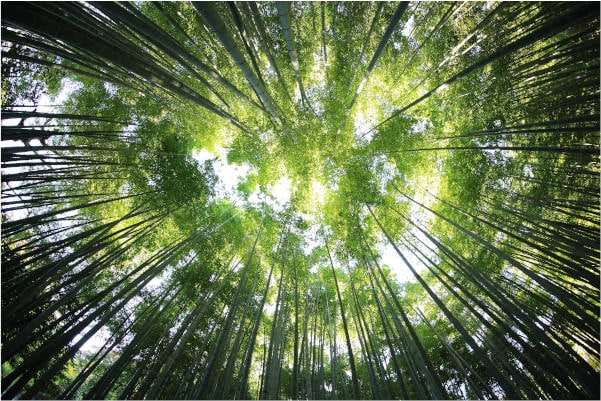
Bamboo, the superhero of natural fibres! Right?! Well, a majority of bamboo used in textiles including yarns is commonly known as viscose (a semi-synthetic), which is chemically intensive and generally not closed loop production. A closed loop production minimises water usage and improper disposal of chemical runoff, and resuses “grey water” for other uses. Bamboo doesn’t have a staple length like hair-based natural fibres and so has to undergo a chemically intensive process to become thread or yarn which, simply put, involves creating a wood pulp and then sticking it back together again in a different shape. It goes through bleach and acid processing that is water intensive and generates harmful air and water pollutants (A4).

It seems that natural fibres aren’t necessarily the totally happy ending we hoped for. So, what do we do about it and how can we consume responsibly? The good news is there are lots of options! And the first thing to remember is that nothing or nobody is perfect. In a textile world dominated by globalisation and fast fashion, being a knitter, crocheter or weaver that creates your own garments is a huge positive.
Much of these problematic processes are used on an industrial level, to produce clothing for “fast fashion” brands that are produced cheaply, meant to be discarded after just a few seasons of wear.
While microplastics are a significant issue for us as a society, most knitters and crocheters aren’t throwing their lovingly created projects in the trash to sit in a landfill – we darn socks, we repair snags, and we take gentle care of our handiwork.
The slow fashion movement is the way forward to help reduce our impact on the Earth, there’s no doubt about that. The good news is that as knitters and crocheters, you’re already part of this movement! When we take the time to carefully knit or crochet a jumper that we’ll wear for years to come, we are actively rejecting the harms of the fast fashion movement. We can be mindful of our fibre choices, and the companies we purchase from, in order to reduce our impact even further.
What you can do:
There are an increasing number of "organic" yarns on the market. Look for GOTS certified yarns, which is a worldwide standard ensuring the organic status of textiles, from harvesting of the raw materials, through environmentally and socially responsible manufacturing.
Consider non-superwash wool! Also consider using wool that is locally reared for extra green knitting and crocheting.
Consume in moderation – try a variety of fibre blends rather than sticking with just wool or cotton. Why not experiment with other fibres such as linen, lyocell, nettle and hemp?
Try natural fibre yarns with recycled fibre content like Rowan Denim Revive, Wool and the Gang Billie Jean, and more
Care for your yarns and finished items lovingly! Hand wash or wash at 30 degrees using natural, gentle detergents. Protect with natural moth repellents like cedar wood or dried lavender to prolong the life of your knitwear. Mend holes with visible darning or patches.
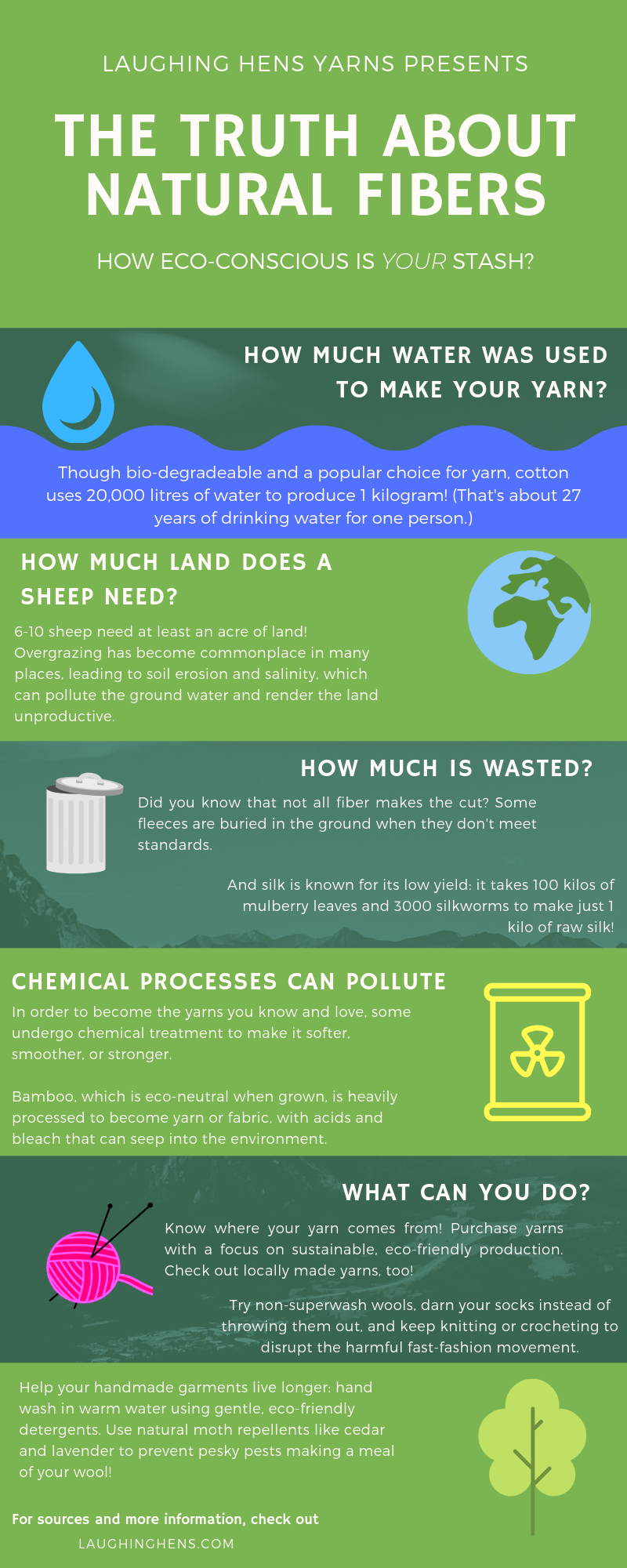
Further reading:
A1:
https://oecotextiles.wordpress.com/2009/08/11/what-does-organic-wool-mean/
A2:
https://en.wikipedia.org/wiki/Silk
A3:
http://www.organicitsworthit.org/get/cotton-and-environment
https://truecostmovie.com/learn-more/environmental-impact/
https://www.ethical.org.au/3.4.2/get-informed/issues/cotton-pesticides/
A4:



